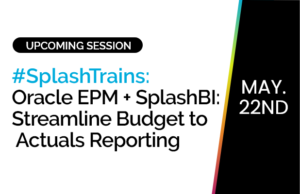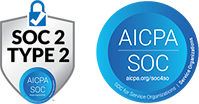In today’s technological day and age, everything revolves around data. That said, the best of the businesses that survive the competition and stay ahead. They do so by utilizing their vast volumes of data to the best of their ability. Does data offer insights into your business? How is it now? And what to expect in the future? Companies are attempting to be data-driven and forecast any operational discrepancies, costs, changes in revenues, customer service, and feedback.
Data analytics is helping companies find the best possible outcome for a given situation with Prescriptive analytics. And that is the ultimate business analytics there is after leveraging descriptive and predictive analytics.
What is Prescriptive Analytics?
In business analytics, prescriptive analytics aims at leveraging descriptive analytics and predictive analytics, and it comes down to a single choice, solution, or outcome. While descriptive analytics provides historical insights and predictive analytics, it offers future insights and prescriptive analytics, as the name suggests the best way to consume your data. Better decision making is the final output of Predictive Analytics in HR. It lets you in on the future opportunities and risks, illustrates a range of choices from them, and further improves the accuracy of the prediction by continuously processing new data through automation.Difference between Predictive and Prescriptive Analytics
Prescriptive and predictive analytics are both advanced analytics, and each of them has a role to play in business analytics. These analytics tools, when combined, change the face of data analytics altogether and up the game for machine learning and artificial intelligence. The two forward-looking analytics tools are showing us what may happen in the future or how to make something happen. For better decision making, predictive and prescriptive analytics integrate machine learning, data mining, and modeling to provide strategic tools and insights about the overall operations and customers. Predictive analytics or prescriptive analytics alone are not enough for an effective business strategy. It is best to use these analytics in conjunction. As predictive analytics can’t keep up with the competition, it requires prescriptive analytics to make smart recommendations, and together they can attain optimal results. They are both equally and independently crucial for better business outcomes.
Within an organization, all forms of business analytics can solve different kinds of problems. For things like Sales trends, inventory control, demand planning, maintenance requirements, customer churn, profitability, short-term insurance risk analytics, predictive analytics plays a vital role.
On the other hand, prescriptive analytics is used for individual trends and for measuring discrete functions, plants, or divisions. For example, it enables us to determine the best operational strategy for a utility company, consumer goods companies, etc. It helps organizations to meet customer requirements, establish optimal strategies, maintain regulatory compliance, and increase overall profitability.
What is the value they bring to the table?
The analytics tools offer tangible results. However, prescriptive analytics provides more concrete results, and it outweighs the values of predictive analytics. As predictive analytics is used within narrow parameters, it offers enormous rewards by maintaining compliance and limiting risks. On the other hand, prescriptive analytics can identify profitable markets and provide sustained growth by exploring multiple options. It is not limited to any predetermined scenarios. The ROI of prescriptive analytics is vast when compared to predictive analytics. However, it is more expensive than the latter. The difference between prescriptive analytics and predictive analytics is that predictive analytics provides short term metrics and assists organizations in what’s happening and how things are going on. Prescriptive analytics provides insights on what things to do and how to do them.-
Predictive Analytics
– It measures the metrics individually, and it doesn’t evaluate the overall impact. -
Prescriptive Analytics
– It measures any metrics by considering all inputs, outputs, processes, etc. It ensures that these metrics are validated to reflect the best business outcome.
How are companies using Prescriptive Analytics Successfully?
Today, there is no rapid adoption of prescriptive analytics. Companies are adopting it to benefit from data-enabled decision making, better supply chains, better costs, more significant profits, and better customer service. The analytics tools have distinct goals to fulfill. There are use cases to determine that prescriptive analytics is the ultimate in solving business problems.- Prescriptive analytics is transforming the healthcare industry by offering medical practitioners’ data-backed decision making and recommendations as oppose to their reliance over intuitive insights.
- Prescriptive analytics is taking business activities a step higher within sales and marketing. It focuses on designing marketing mixes and product mixes, promoting products, optimizing trade campaigns, forecasting demands, etc.
- Prescriptive analytics’ ultimate goal is to lessen future risks and offer relevant opportunities in conjunction. The future of business analytics is in the mass adoption of prescriptive analytics in all Big data projects.









